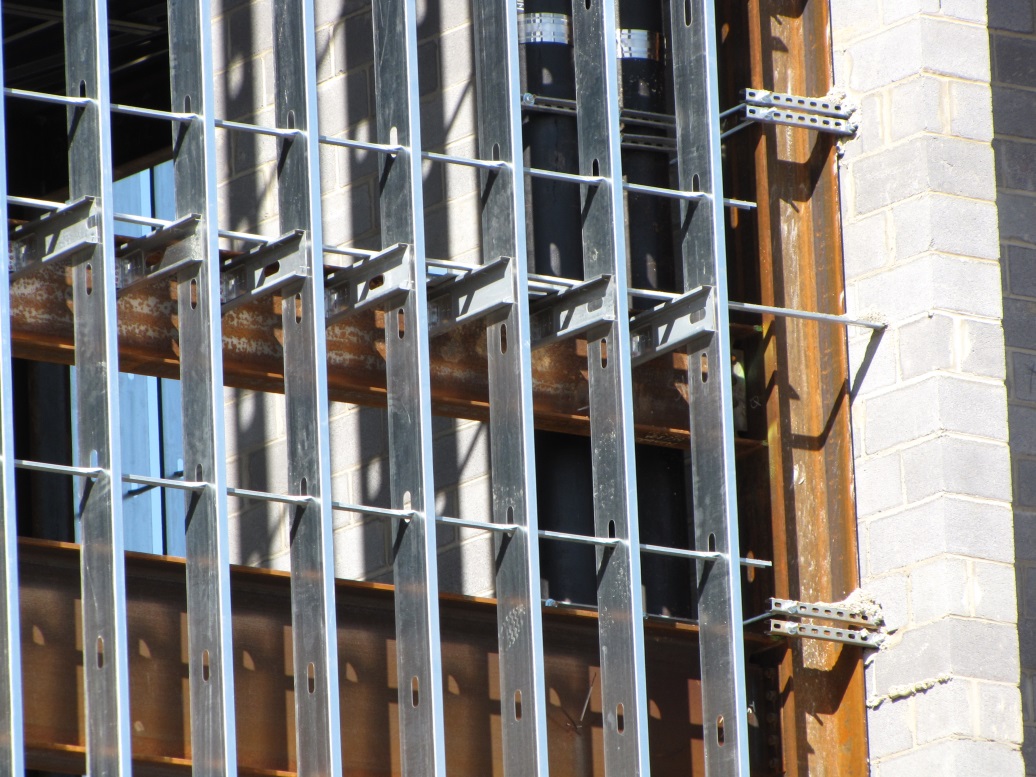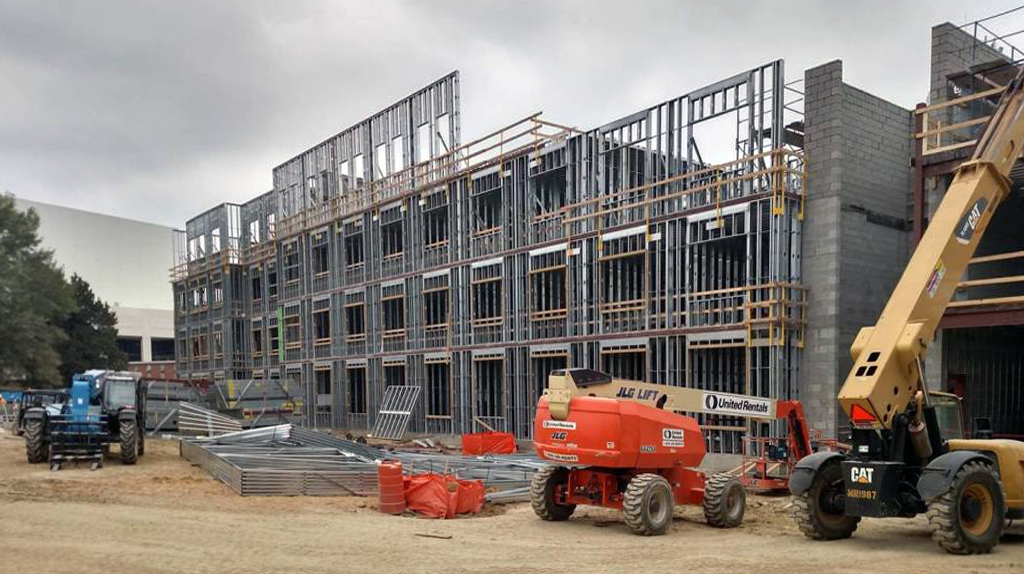

Plus, CFS is galvanized, which protects against corrosion. Since CFS is not a food source, you do not have to worry about rotting or issues with insects and termites.

Straps are 2 to 12-wide thin sheets of steel used for tension loads. L-headers are less common in construction.

They span across openings to help transfer the load over a door or window onto jamb studs. This piece of CFS is a large angle, or L-shaped, and is positioned on top of the wall top track to act as a simple header. This can help reduce sound transmission or improve fire resistance. This refers to a “hat-channel” type of CFS that is often applied to the face of wall or bottom of ceiling in order to provide a wedge or spacing element (otherwise known as furring) to the sheathing. It’s important to note: standard studs have knockouts that are oval shaped holes at a periodic spacing used for electrical conduit or plumbing a U-channel can pass through these knockouts and tie studs together for bracing. This is a smaller U-shaped product that goes through the web knockout of each stud for bracing or will often be used to support ceiling framing with hanger wire. These products are U-shaped and do not have a lip return to allow the stud to seat inside the track. TrackĪ track section will often cap the bottom and top of a steel stud wall. These are typically used as a vertical element in the framing of a wall. StudsĪ stud refers to cold-formed steel that has been formed into a C-shape with a lip return. The most commons shapes are C, Z, U, or hat channels 6 Main Types of Cold-Formed Steel Products 1. Cold-formed steel framing, however, is used in construction where thin sheets of steel are typically formed into shapes to take advantage of its large strength to weight ratio. It’s often found in appliances, cars, and laptops.

We’ve also included a helpful list of resources and technical guides that you can reference when embarking on your next cold-formed steel framing project. Cold-formed steel framing has become a popular choice in construction projects, with contractors now more often choosing cold-formed steel over traditional wood framing.īut what exactly are the common types, the benefits, and what should you consider when ordering from a manufacturer? In this comprehensive guide, we’ll explore everything you need to know so you can order the right materials.


 0 kommentar(er)
0 kommentar(er)
